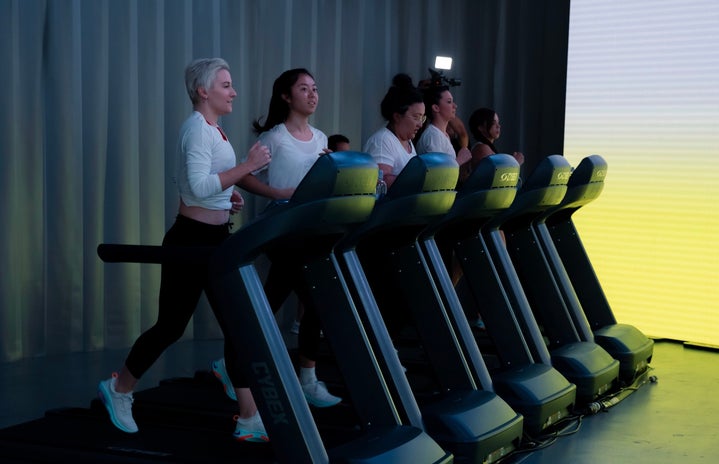If you are anything like me, taking time to look after yourself has never been a priority. There always happens to be an assignment to be done, a midterm to study for, or a Netflix show that has to be finished. You’re already too exhausted at the end of the day with the way things are, so adding in a workout routine to look after yourself seems so far out of the question. I had the same philosophy up until a few months ago. All through quarantine, my days consisted of me rolling out of bed, to my desk less than a foot away. The most strenuous activity I was doing would be walking down a flight of stairs to the kitchen for food. I seemed to be living a relaxed life (aside from the pressure of school) but somehow, I would end my days emotionally and physically drained.
To make matters worse, my confidence was at an all-time low, as I was watching myself gain weight in all the wrong places. I started spiralling and developed a weirdly intense and specific fear of heart disease, as one does when they get that random shooting pain in the left side of their chest. Around the same time, I came across a viral TikTok workout for losing weight: walking on a treadmill at an incline of 12, speed of 3, for 30 minutes. I made a long, tiring walk from my room, down two flights of stairs, to my basement where my 10-year-old, barely touched treadmill sat, and I powered through the workout. The entire 30 minutes were difficult and uncomfortable. I was out of breath and cramping within the first 15 minutes, and to be completely transparent, I wasn’t able to finish the whole 30-minute workout and ended up clocking out at the 20-minute mark. But immediately after, a bizarre sensation took over me.
I felt very clear and relaxed – as if the brain fog that had developed over the months of doing nothing had lifted. It was a similar feeling to stepping out on a warm and sunny spring day and taking in a breath of fresh air. Immediately after, I was able to go back to studying as if the first 6 hours of the day hadn’t happened; I was completely renewed. I loved the feeling and was able to meet the 30-minute goal within a week of incorporating the workout into my daily routine.
The sense of accomplishment was heightened when I had noticed that my face had begun slimming down. My confidence skyrocketed, I had developed a newfound sense of direction and was addicted to moving upwards. Working out is one of the few activities that gives you an instant sense of satisfaction. Since I started, the initial 30-minute walking goal has become much easier over time. I was able to add a 15-minute run right after the walk, as well as ab and leg circuits right after. That being said, I had taken up working out before, but only recently did it stick.
So, what was different this time around? To build a sustainable workout routine, it’s best to start easy. This may sound counterintuitive as you hear fitness gurus on social media talking out how important it is to push yourself but as a beginner, the first thing we need to establish is confidence. Doable goals set up a system of positive reinforcement. Once that you’ve been able to reach these goals, and they start to feel boring and easy, up the intensity – not so much that it becomes undoable, but enough so that it stays a challenge.
The difficulty of the exercise you’ve been able to complete should become the basis of your reward system. This is where many people fall through and lose momentum. Most people get into working out with the expectation of physical improvement. The habit of looking in the mirror to see if your abs are peaking through is only discouraging you. While you’ll see the improvements you aim for eventually, the results come in far too slowly for this to be what you base your motivation on. Focusing on positive reinforcement by achieving increasingly difficult exercises will make working out regularly a sustainable habit.
Related Articles
- Gluten Free: Not Just a Trend but a Lifestyle Choice
- My Journey to Self-Love
- Pick Up One of These Daily Habits for a Better 2021
Want more HCMACU? Check us out on social media!


